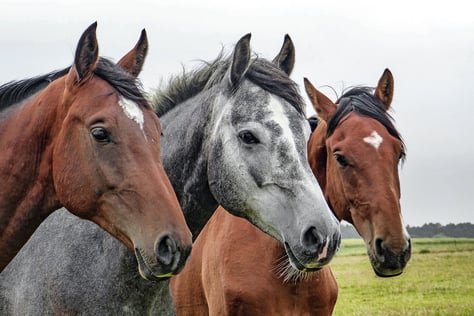 If you and your horse enjoy trail riding, then the sport of Competitive Trail Riding (CTR) might be a good fit for the both of you. A Competitive Trail Ride is not a timed event like endurance where the fastest time wins. It is probably closer to Eventing in that riders are out on the trail one at a time and negotiate obstacles. There are also mandatory vet checks. And, like Eventing, success comes from the trust and communication between horse and rider to safely complete the course. A CTR is usually held on a weekend and can run one, two or even three days. The competitors usually cover a distance of 15-40 miles per day.
If you and your horse enjoy trail riding, then the sport of Competitive Trail Riding (CTR) might be a good fit for the both of you. A Competitive Trail Ride is not a timed event like endurance where the fastest time wins. It is probably closer to Eventing in that riders are out on the trail one at a time and negotiate obstacles. There are also mandatory vet checks. And, like Eventing, success comes from the trust and communication between horse and rider to safely complete the course. A CTR is usually held on a weekend and can run one, two or even three days. The competitors usually cover a distance of 15-40 miles per day.
In the United States and Canada, as well as in other countries, there are several organizations that sanction competitive trail riding. In the United States, they include North American Trail Ride Conference (NATRC).
In NATRC competitions, the horses are evaluated by an approved veterinary judge, and riders are evaluated by an approved horsemanship judge. The judging begins at the preliminary examination, usually the day before the ride, continues during the ride, and concludes at the final examination one or two days later. The equines (horses, ponies, and mules) are evaluated on condition, soundness, their trail manners, and way of going. Riders are judged on horsemanship as it applies to competitive trail riding. The judges will examine the horses at the end of a day's ride and again before timing out on the second day. The final vet check, after the ride, is similar to the pre-ride examination. Competition is over when this final vet check is done.
Most any horse can compete in Competitive Trail Riding, but both training and 
conditioning should be a part of the program before you attempt your first event. Training aims at teaching the horse not only to obey commands, but also how to handle rough terrain and obstacles such as steep climbs, rocky descents, deep creeks, fallen limbs or logs, etc. Conditioning toughens the horse and builds stamina by improving the muscles, heart, lungs, tendons, ligaments, skin, feet, etc. In the peak of condition the horse will not tire readily. His breathing will not be as rapid as when he was "soft", nor will the heart have to pump as fast. And since he is trained, he will handle himself better and waste less motion through inexperience and nervousness.
To find out more information, click HERE to visit the North American Trail Ride Conference website.



